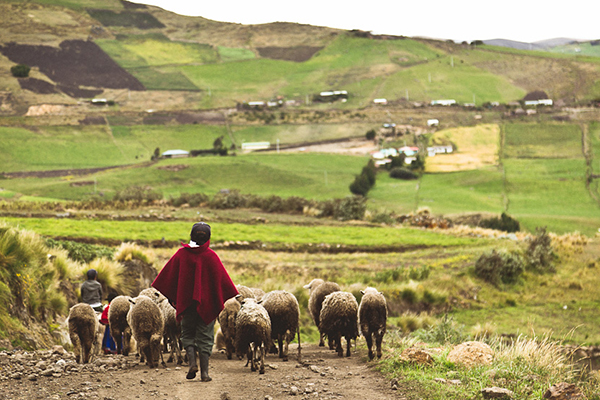When our MEDLIFE Ecuador team came to visit our main office in Lima this April, we sat down with Ecuador Director Martha Chicaiza, Field Nurse Maria Chavez, and Project Director Luis Cartagena to talk about development issues in Ecuador, and the effects of recent government interventions on the work that they do. Check out what they have to say about rural to urban migration in their country:

When MEDLIFE brings Mobile Clinics to the small villages of the sierra, where MEDLIFE works in Ecuador, the line of patients is often made up primarily of women, children and older residents. This phenomenon has prompted several volunteers to ask, where are all the men? And what about the young people?
Migration from Ecuador’s rural areas to its city centers, as well as emigration to other countries, has primarily been a result of two economic crises – a collapse in oil prices in the early 1980s and a subsequent economic downturn in the late 1990s. The 1990s crisis spurred an especially large exodus, with most people headed to the US or Spain. The majority of those who choose to migrate to bigger cities are young men chasing urban employment opportunities; they are often trying to support families in their hometowns by sending back remittances.
“The conditions then [in the 1990s] were really bad,” said Maria Chavez, who works as a field nurse for MEDLIFE in Ecuador. “There was no money, no opportunity.”
Many rural residents choose to become economic migrants because they are unable to pursue higher education or feel stuck in low-income agricultural jobs. Larger-scale migrations have also occurred recently due to globalization, which has made travel easier and allowed residents to become more aware of other opportunities.
The negative effects of migration are notorious and include: instability for children, economic distress, tension between migrants and locals, cultural erosion, worker exploitation, and other social problems.”Women who are left alone sometimes feel that they must choose between taking care of their animals and fields and taking care of their families,” explained Luis Cartagena, who organizes and oversees community development projects in Ecuador. “What happens when a child needs to see a doctor far away, but the mother feels that she can’t leave her animals?”
But Chavez also noted that there are positive aspects to recent migration, especially for indigenous groups. “It exposes them [rural residents] to other realities and helps them to better understand and claim their rights,” she said. “Lately, there has been a lot of consciousness-raising around personal rights.”
Both the urban and rural experience for indigenous people in Ecuador is tied up in the country’s deeply rooted racism. Many indigenous residents self describe their main issues with city life as exploitation in the workplace and the prejudice they face solely for being of a certain race or color.
In the sierra, MEDLIFE patients of indigenous descent are often ignored or made to wait longer than their non-indigenous peers when trying to access social services, according to Ecuador Director Martha Chicaiza. “Going to a hospital can be daunting for anyone,” she said, regarding access to health care. “But imagine if you’ve never been to a doctor in you life, and you have no idea how the system works. It’s easy to take advantage of other people’s ignorance or fear.”
MEDLIFE Ecuador staff members agree that the quality of rural life has improved recently thanks to a slew of new government policies initiated under President Rafael Correa. Aside from improving the infrastructure in Ecuador’s countryside, the president has also begun an aggressive push for transnational migrants to come home. The national “Welcome Home” program encourages migrants to move back to Ecuador by reducing custom fees and providing tax breaks for starting new businesses; the “Hecho en Ecuador” (Made in Ecuador) campaign encourages consumers to buy locally produced products.
According to Chavez, the government also wishes to curb the rural to urban migration within the country and is working on policies to encourage rural residents to stay put. MEDLIFE Ecuador has also contributed to the development of rural areas of the Chimborazo and Napo provinces through our Mobile Clinics, hygiene projects, and school projects, and will continue to assist in raising rural living standards.
“Now, more people are coming back to the countryside,” Chavez said. “There is much greater economic stability.”
